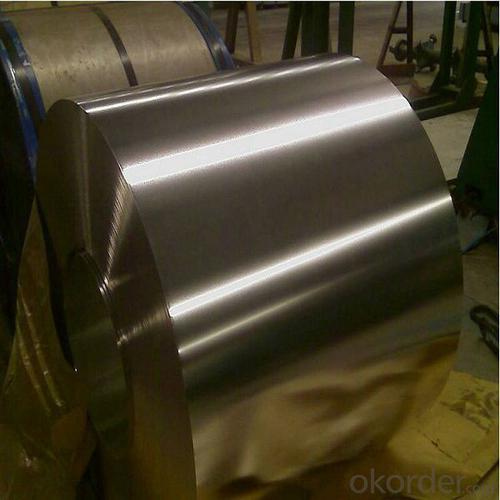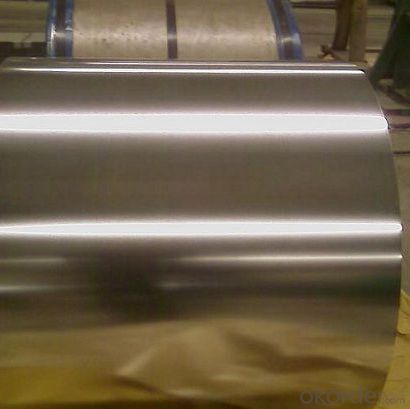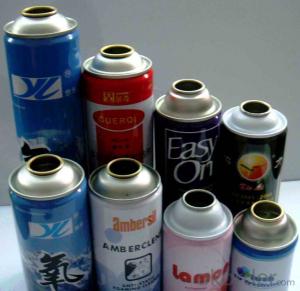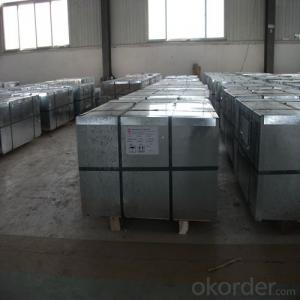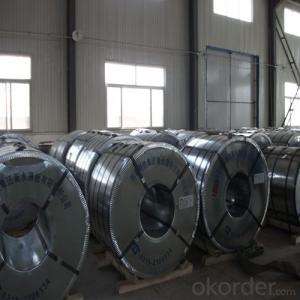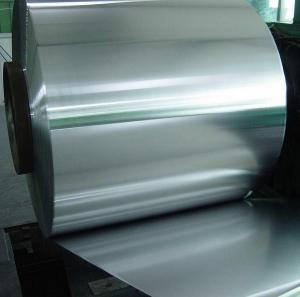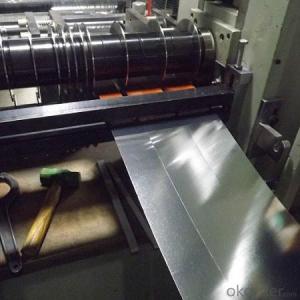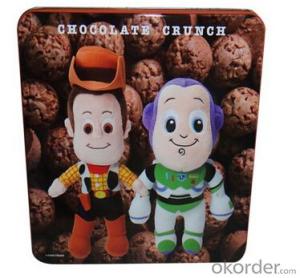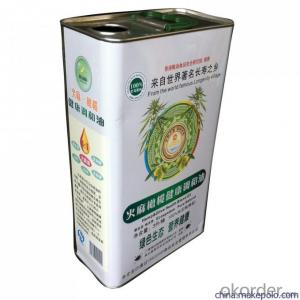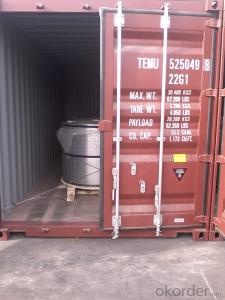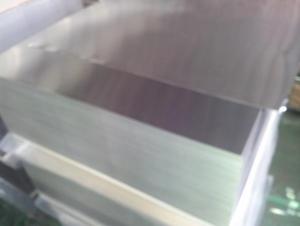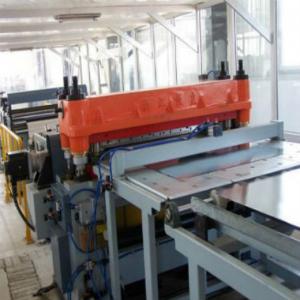Tinplate, SPTE for Cans making, competitive price
- Loading Port:
- Tianjin
- Payment Terms:
- TT or LC
- Min Order Qty:
- 25 m.t.
- Supply Capability:
- 2000 m.t./month
OKorder Service Pledge
OKorder Financial Service
You Might Also Like
Specification
Prime quality Tinplate Sheet and Coil for Cans Making
1.Structure of Description
Electrolytic Tinplate Sheets is one of the metal packing materials, which is widely used for making painting cans ,chemical package cans , electrical cable ,battery and metal printing etc. For caps, there are some customers also need TFS, if you have some demand for TFS,also can contact with us.
2. Main Features
Steady and high quality
Fast shipment
Good experience for export work
For the surface, Plate uniform in thickness,uniform and smooth tin coating, without flaws,rusts,scratch,wave,nick of tin coating etc.


Specifications
| Type | MR, SPCC |
| Temper(BA&CA) | T1-T5, DR8-DR10 |
| Coating | 1.1-8.4g/m^2 |
| Thickness& Tolerance | 0.15-0.5mm(tolerance +/-0.01mm) |
| Width& Tolerance | 600-1010mm(tolerance +2/-0mm) |
| I.D | 508mm |
| Coil weight | 3-10MT |
| Passivation | 311 |
| Oiling | DOS |
| Surface finish | Bright, stone |
| Package | Seaworthy Export Standard Wooden Pallet |
| Standard | ISO 11949 -1995, JIS G3303,ASTM A623, BS EN 10202 |
| Special specifications are available on customers' requirements | |
Application
Tinplate is widely used for making all types of containers, electrical machinery parts and many other products.
- Chemicals and painting cans
- Dry food cans, such as fancy cans, biscuit cans, milk powder cans, tea cans,
- Sea food cans
- Crown corks, easy open ends
- Electrical machinery parts
- Bakeware and household kitchen parts
FAQ
CNBM Introduction
China National Building Materials Group Cooperation, as a leading state-owned enterprise with 3 billion USD and 40,000 staff in China, CNBM was established in 1984 under the administration of the state-owned Assets Supervision and Administration commission of the State Council. There are over 300 surbordinate factories and companies in our group; 2 public listed companies in Hong Kong, 4 Public listed companies in China mainland; 11 publicly listed companies in which CNBM has a substantial percentage of shares. The business scope of CNBM covers from Manufacturing and sales of building materials to scientific research and design, engineering, import and export trading.
On July 7th, 2011, Fortune Magazine established Fortune Global 500 ranking on its website, and CNBM Group was listed for the first time, with a ranking of 485.
CNBM International Corporation
CNBM International Corporation, as an important import and export platform of CNBM Group, enjoys competitive advantages in importing and exporting of building materials as well as complete sets of machinery and equipments, engineering, and project contracting.
CNBM Branch Offices
In order to promote the business connection, CNBM has established branches and offices in lots of foreign countries, such as USA, GERMANY, UAE, SAUDI ARABIA, IRAN, JORDAN, LIBIA,ETHIOPIA, INDONESA, INDIA,VIETNAM,RUSSIA,KAZAKHSTAN. It is very helpful for the communication and after- sale services.
Factory Introduction
CNBM as one of the largest suppliers in tinplate industry, offers clientss prime quality tinplate in both coil and sheets. With multi-plants and fully integraded production, the annual capacity of tinplate is 400,000MT.
To ensure the high quality if the tinplate, CNBM owns complete equipment series.
- Reversing cold rolling machines: 14 sets
- Continuous rolling machines: 2 sets
- BA furnaces: 50
- CA line: 1
- Tinplate production line: 2
- SA& DA reduced tinplate sheet: Available
CNBM also produce other steel products, such as cold-rolled steel, hot dip galvanized steel, color coated steel and tin free steel coils and sheets.
- Q: How does tinplate perform in terms of UV resistance?
- Tinplate generally has poor UV resistance, meaning it is not highly resistant to the damaging effects of ultraviolet radiation.
- Q: How is tinplate coated?
- Tinplate is coated through a process called electrolytic tinning. In this process, a thin layer of tin is electroplated onto the surface of steel sheets or strips. The steel is immersed in an electrolyte bath containing tin salts, and an electric current is passed through the bath. This causes the tin to deposit onto the steel surface, creating a protective coating that prevents corrosion and enhances the appearance of the tinplate.
- Q: How to test the tightness of tin metal cans?
- The empty tank which has been cleaned can be dried by 35, and the pressure or pressure leak test shall be carried out according to the equipment condition of each unit. B.1 pressure leak test, the empty tank will be carefully injected into the water until eight or nine into full, the rubber ring will be placed in the appropriate plexiglass plate at the opening side of the roll, so that it can be sealed. Start the vacuum pump, turn off the bleeder valve, hold down the cover by hand, control the pumping, and make the vacuum gauge rise from 0Pa to 6.8X10 PA (510mmHg) for more than 1min, and keep the vacuum above 1min.
- Q: What are the typical lead times for tinplate production?
- The typical lead times for tinplate production can vary depending on various factors, such as the complexity of the product, order quantity, and the production capacity of the manufacturer. However, on average, lead times for tinplate production can range from a few weeks to a couple of months. It is recommended to consult with the specific manufacturer for more accurate and up-to-date information regarding lead times.
- Q: How is tinplate used in the manufacturing of kitchenware?
- Tinplate is commonly used in the manufacturing of kitchenware as it provides a protective coating on steel products, preventing corrosion and extending their lifespan. This coating of tin also enhances the appearance of kitchenware, making it more visually appealing. Additionally, tinplate offers a non-reactive surface, ensuring that food does not get contaminated by the metal it comes in contact with. Therefore, tinplate is widely utilized for various kitchenware items like cans, containers, cookware, and utensils.
- Q: Why tinned fruit cans, some snow wall, and some inner wall does not appear?
- The same is canned fruit, tin cans taste more than glass bottles, why is it better? Because the storage process is completely isolated from the sun, so that it can retain the original flavor of canned fruit.
- Q: Can tinplate be used for packaging alcoholic beverages?
- Yes, tinplate can be used for packaging alcoholic beverages. Tinplate is a commonly used material for cans and can provide a protective barrier against external factors such as light and oxygen, ensuring the quality and freshness of the alcoholic beverages.
- Q: How does tinplate compare to aluminum in terms of properties and applications?
- Tinplate and aluminum have distinct properties and applications. Tinplate is steel coated with a thin layer of tin, making it corrosion-resistant, ductile, and easily solderable. It is commonly used for food and beverage packaging, as well as in construction and automotive industries. On the other hand, aluminum is lightweight, non-corrosive, and possesses high thermal and electrical conductivity. It finds extensive use in aerospace, electrical, and packaging industries due to its strength and recyclability. While tinplate offers better barrier properties, aluminum excels in weight reduction and energy efficiency. Hence, the choice between the two depends on specific needs and requirements.
- Q: Can tinplate be used for packaging soups and broths?
- Yes, tinplate can be used for packaging soups and broths. Tinplate is a commonly used material for food packaging due to its excellent barrier properties, which help preserve the quality and freshness of the contents. It is also resistant to corrosion and can withstand high temperatures, making it suitable for packaging hot soups and broths.
- Q: What are the different methods of labeling and branding on tinplate packaging?
- Some of the different methods of labeling and branding on tinplate packaging include lithographic printing, embossing, hot stamping, and screen printing.
Send your message to us
Tinplate, SPTE for Cans making, competitive price
- Loading Port:
- Tianjin
- Payment Terms:
- TT or LC
- Min Order Qty:
- 25 m.t.
- Supply Capability:
- 2000 m.t./month
OKorder Service Pledge
OKorder Financial Service
Similar products
Hot products
Hot Searches
Related keywords



